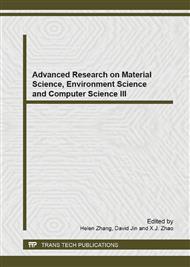[1]
Li-jun FAN, Hai-ru YANG. (2006) Research of auction applies on agricultural wholesale market in our country. Market Modernization. 481(10): 44-45 (in Chinese).
Google Scholar
[2]
Wen-chang WANG, Xi-hui LI, Jun-feng LI. (2001) The western characteristic economy development. Minorities Press, Peking. (in Chinese ).
Google Scholar
[3]
Yun-fei YANG, Yu-kun BAO, Jing-long ZHANG. (2010) Analysis of WTI crude oil price fluctuation based on GARCH model. Journal of Wuhan University of Technology (Information & Management Engineering). 32(5): 811-814 (in Chinese).
Google Scholar
[4]
Pei-long SHEN, Tong-zheng XING. (2010) Analysis of WTI and Brent crude price risk based on GARCH model. Journal of Harbin institute of technology (social science edition). 12(3): 88-92 (in Chinese ).
Google Scholar
[5]
Lu-jing ZHANG. (2009) Research of price fluctuation in stock market in Shenzhen city based on GARCH model. Modern Economics. 8(8): 29-32 (in Chinese).
Google Scholar
[6]
Lin WU. (2010) The analysis of stock price fluctuation based on model of GARCH. Value Engineering. 29(26): 50-52 (in Chinese).
Google Scholar
[7]
Zhi-xiang YUAN, Shao-chun DENG, Teng-yun XIE. (2008) Research of the relationship between Chinese variables price in stock market based on GARCH-M model. Finance & Economy. 11: 130-312 (in Chinese).
Google Scholar
[8]
Hong SHEN, Jian-min HE, Xiao-ping HU et al. (2010) The influence of monetary increase on futures market based on Multi-scale GARCH-GED model. Chinese Journal of Management. 7(2): 263-267 (in Chinese).
Google Scholar
[9]
Zi-long WANG, Xiao-di XU, Hao-ran XU et al. (2009) Price fluctuation model of housing industry and its empirical analysis, Productivity Research, 23: 103-104 (in Chinese).
Google Scholar
[10]
Liu-bao DENG, Gui-yuan YANG. (2009) The stable effect of commodity house opens to booking in municipality based on GARCH model Productivity Research. 18: 66-67 (in Chinese).
Google Scholar
[11]
Jia-fu LIU, Hui-qiu ZHOU, Xiao-zhong LI. (2010) Analysis on price fluctuation and affecting factors of soybean in China. Journal of Northeast Agricultural University (Social Science Edition). 8(4): 10-13 (in Chinese).
Google Scholar
[12]
Yin TAN, Da-sheng LI. (2010) Price expectation, Volatility and supply reflection model of pork. Anhui Agricultural Science. 38(21): 11527-11529 (in Chinese).
Google Scholar


